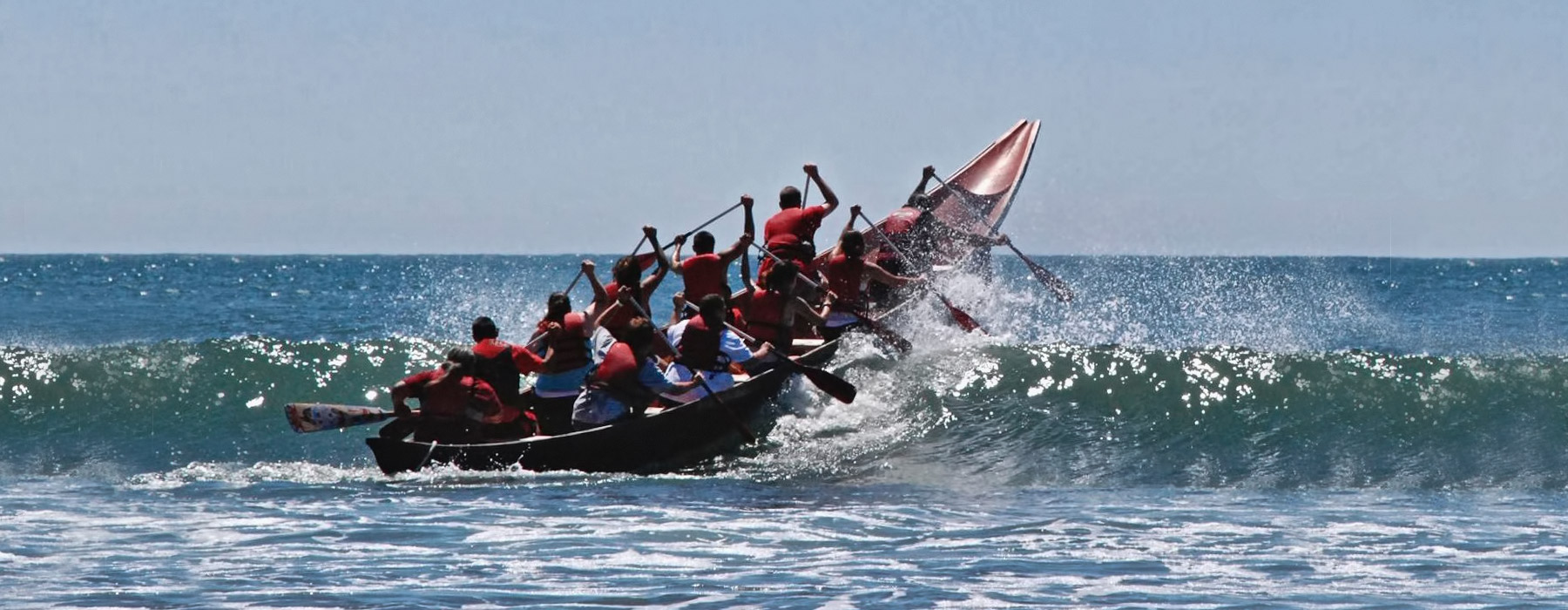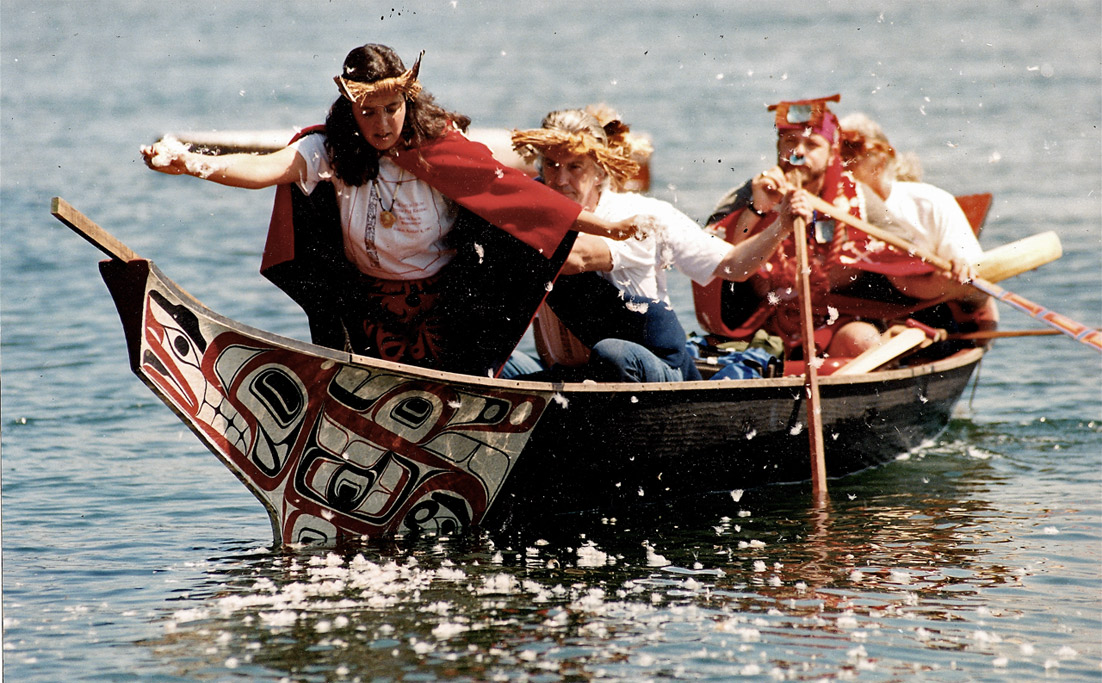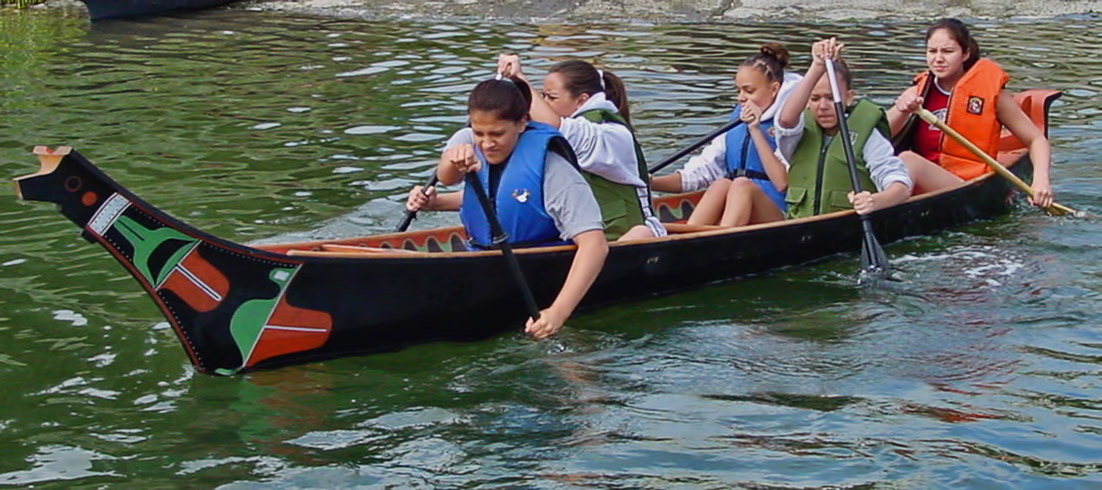Nuxwq’eeyt
Duane built Nuxwq’eeyt, the canoe above, in 2006. Named for the traditional name of Point Julia at the entrance to Port Gamble Bay and the site of the original S’klallam village, the canoe is 36 feet in length, with a 5 foot beam and is constructed of 1 inch x 2 inch cedar strips over a frame made of 2 inch x 4 inch fir. The final surface is smooth and has been fiberglassed. The Salish style design on the bow represents an Orca, the crest of the tribe.
Nuxwq’eeyt has a flat bottom, a slight departure from tradition in that historically Salish canoes were for the most part round bottomed. The flat bottom gives the craft more initial stability , which is obvious in this photograph of the canoe leaving Taholah, Washington, the 2013 destination of the annual Tribal Canoe Journeys.
Video: Duane talks about building canoes over the years
Northwest Coast Native people loved their canoes for their beauty and, more importantly, because their lives depended on them. Being a waterborne culture, boats were primary in the quest for sustenance—fishing on the ocean, setting and tending nets, going to shellfish beds and traveling to hunting and gathering areas. Social interaction with other villages and tribes was accomplished by canoes that could carry around thirty people.
Several styles of canoes existed among the tribal groups, each created for a specific purpose. Canoes are usually made from a single cedar log which is carved, hollowed and spread. Originally, personal reasons may have accounted for their designs above the water line, but their primary consideration was form and function. I’ve had the pleasure of making several canoes of various styles and sizes and have designed and consulted on canoe projects by others. I’m often asked what is my favorite style canoe? The truth is I love them all.



